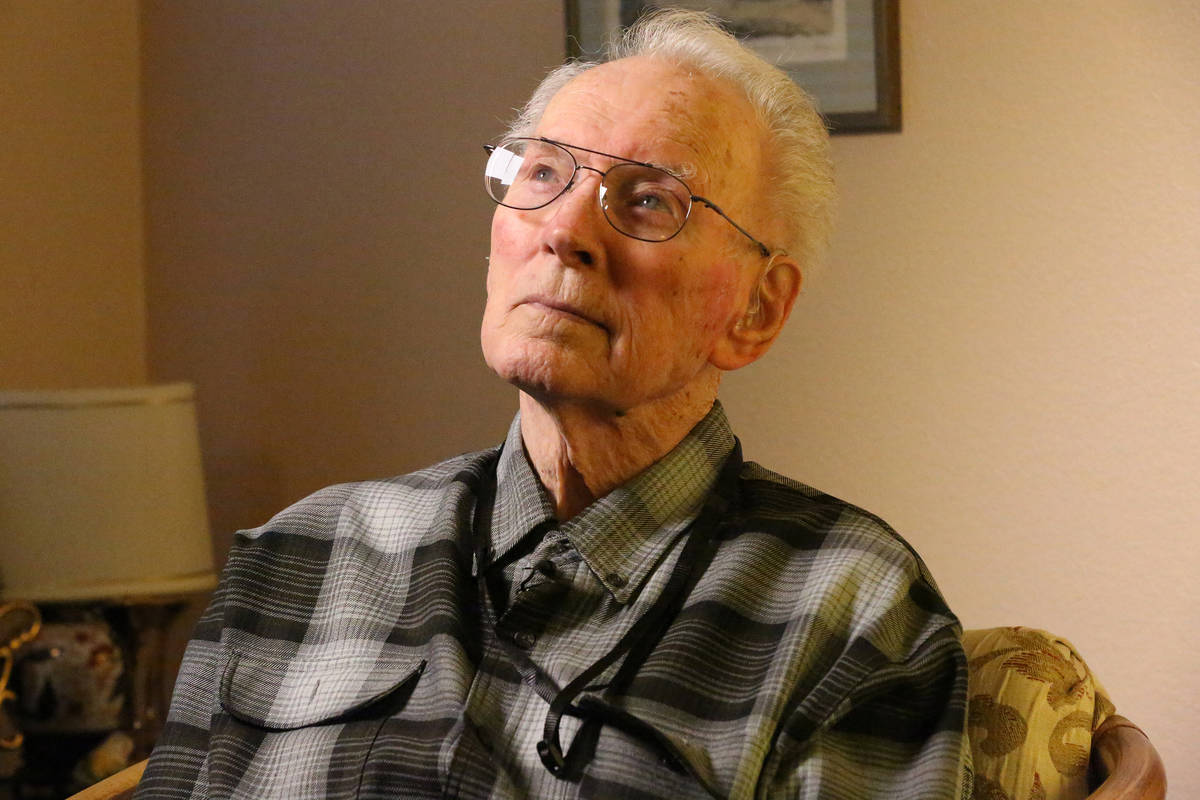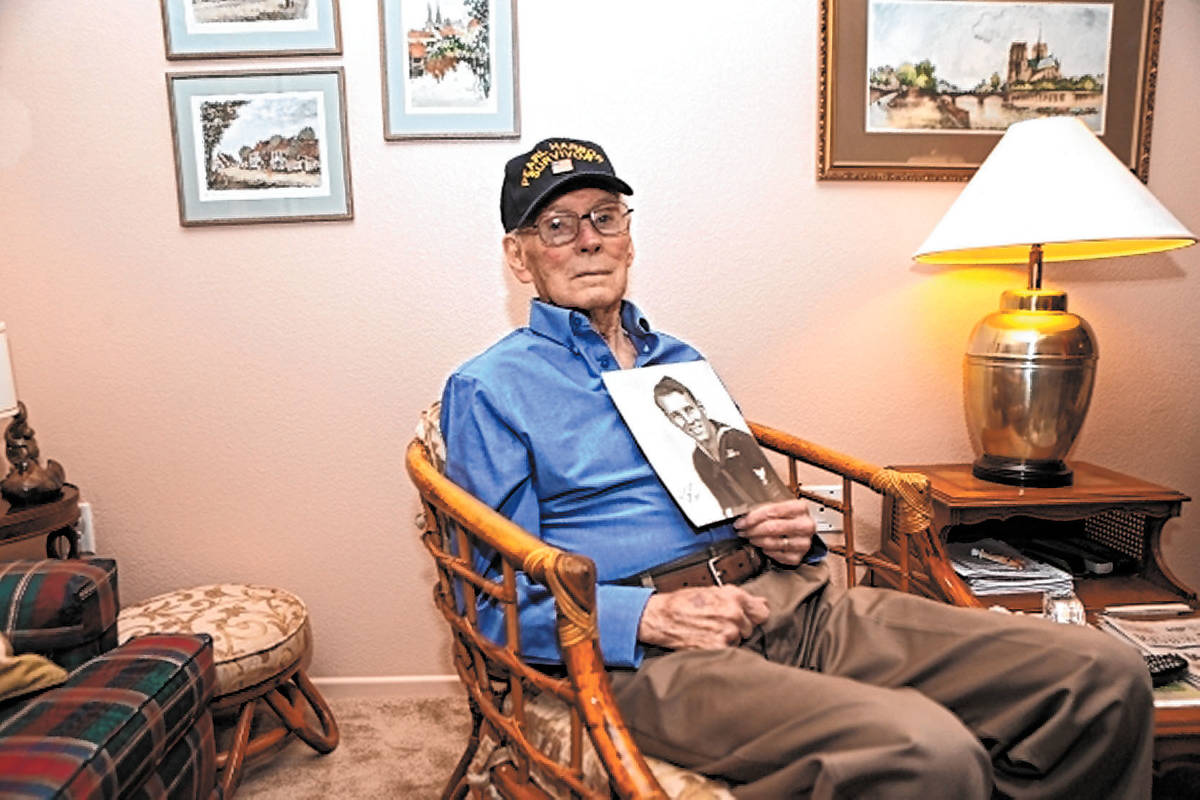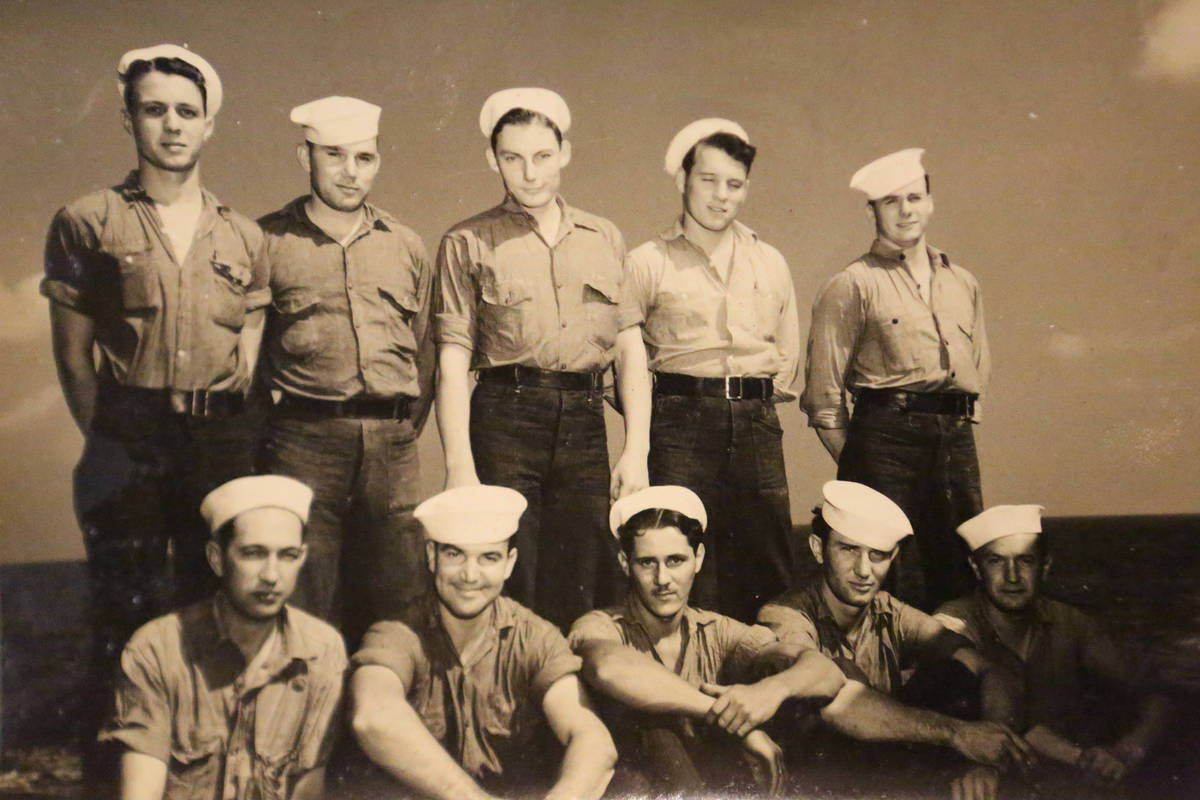Lenoard Nielsen, 98, never forgot lessons of attack on Pearl Harbor
Though Lenoard Nielsen lived for decades after surviving the Japanese attack on Pearl Harbor, the horrors of that fateful day “rested on his shoulders” for a lifetime.
“I can never forget Pearl Harbor, and the visual facts that I have in my head,” the retired Navy lieutenant commander told the Review-Journal in his last interview in December.
“To survive it is something else, but to help those who haven’t is something else.”
Nielsen died Sunday, his daughter, Lisa DuPere, announced over the weekend. He was 98.
“One of the greatest men who gave us freedom,” DuPere posted on Facebook. “I will always honor you.”
In a separate post, DuPere said her father survived not just the war, but a fall, surgery, pneumonia twice and the COVID-19 pandemic.
“You served and fought for this country, you are a Pearl Harbor Survivor and as tough as they come. I’m proud to be your daughter,” she wrote.
In an interview Thursday, DuPere added, “He was a good soul and always willing and wanting to share information and history, and that’s a gift that he certainly gave a lot of us.”
With Nielsen’s death, there is only one known Pearl Harbor survivor in Las Vegas, 96-year-old Ed Hall.
Hall, who got to know Nielsen well during the Aviation Nation air show at Nellis Air Force Base over the years, said Tuesday he was saddened to hear the news of his friend’s passing.
“I remember him well. … What a shame. I think I’m the last one now,” said Hall.
‘Date which will live in infamy’
Nielsen was a 19-year-old apprentice seaman from Salina, Utah, on Dec. 7, 1941, when 350 “Zero” fighters, “Kate” torpedo planes and “Val” dive bombers launched from Japanese navy carriers attacked the harbor and the coast of Oahu.
He had joined the Navy at 18 in 1940 to become a shipfitter — a sailor who repairs ships — and was assigned to the USS Arizona out of boot camp.
After the Arizona arrived in Pearl Harbor, he was granted a transfer to serve with a childhood friend aboard USS Pensacola, a heavy cruiser.
The Pensacola, nicknamed the “Grey Ghost,” departed Nov. 29, 1941, to transport Marines to Midway Island, but Nielsen came down with appendicitis and was too sick to make the trip.
He was taken to the USS Solace hospital ship, where doctors removed his appendix the next day. Still recovering a week later, he watched the attack unfold from the Solace, which was anchored in sight of the Arizona.
He was out on deck that Sunday morning, he told the Review-Journal, watching the new day dawn with a friend, telling jokes, when he looked up and saw planes coming.
“I had no idea until they started dropping the torpedoes and bombs,” he said.
He was watching the dawn of the day President Franklin D. Roosevelt would later declare a “date which will live in infamy.”
That day, he watched the USS Oklahoma roll over, and his old ship, the Arizona, explode and sink. He said in December that he still thinks of the men that were there, upside down. The recovery of the body parts. The men jumping off boats into the fiery oil slick.
In all, 2,403 men and women died in the attack. Almost half — 1,177 — were on the Arizona.
With smoke billowing around them, Nielsen and others from the Solace hopped in longboats and rushed to rescue the sailors.
“We proceeded to rescue as many men as we could,” he said. “I often wonder how many trips we really made.”
For the next three months, Nielsen helped to recover bodies from the harbor.
Philosophical final interview
Nielsen was philosophical in his last interview with the Review-Journal in December.
“I should have been gone a long time ago,” he said. “I have no idea how I lived, except the man upstairs must have said, ‘We got no room for you.’”
Nielsen, who was born June 13, 1922, said his time in the Navy taught him much, and his experience at Pearl Harbor was a reminder that families and schools need to educate the younger generations about the past, he said.
“They need to understand what can happen, how close we come to not being the United States as such,” he said.
“If people would realize, and read and understand the history. You might make a lot of people appreciate more America, being free.”
Nielsen also expressed concern for the division in the nation today on politics and social and race issues.
“We’re entitled to have differences, that makes the world better, so long as we recognize we all have the same color blood,” he said.
“The one thing that (the Navy) taught me is we’re all human. We all have a breaking point. We all need each other. And we need to stop this.”
Nielsen is survived by his daughter, Lisa DuPere, his grandson, Brennen DuPere, and his 90-year-old sister, Marie.
He will be buried Aug. 28 in Vancouver, Washington, next to his wife of 67 years, Barbara Nielsen.
Contact Briana Erickson at berickson@reviewjournal.com or 702-387-5244. Follow @ByBrianaE on Twitter.

























